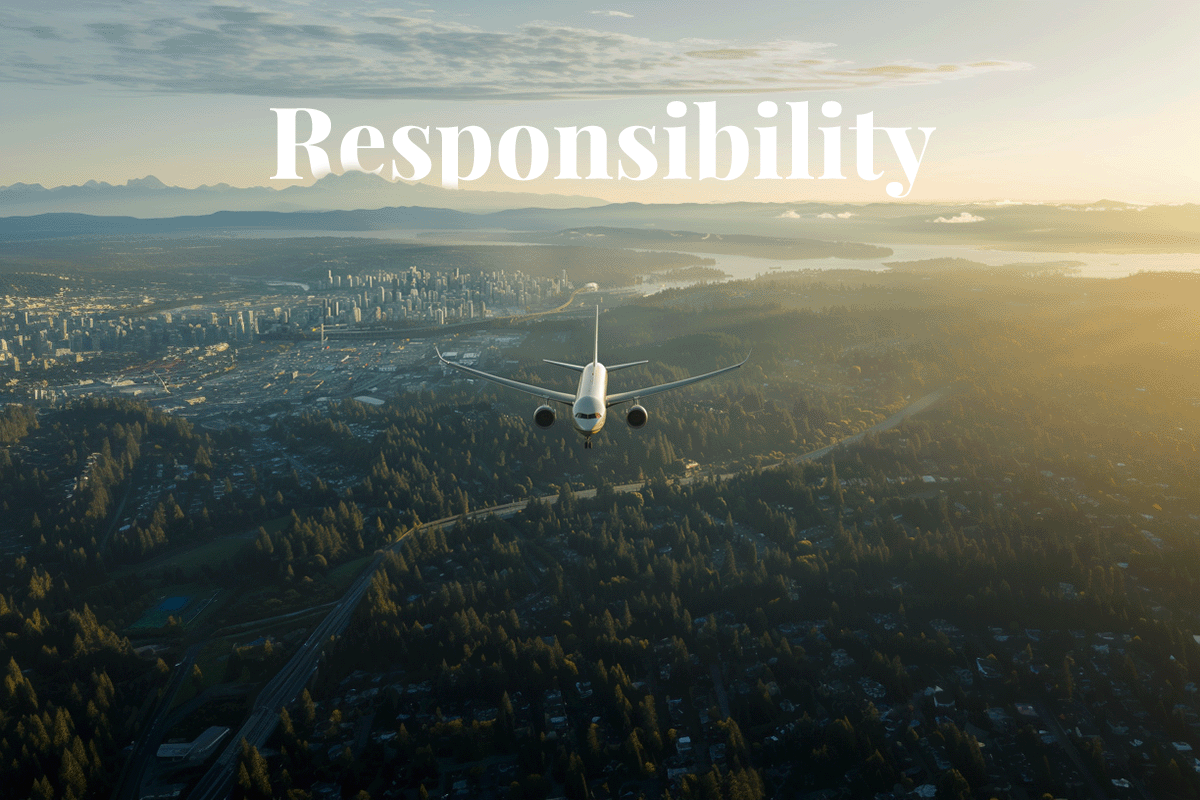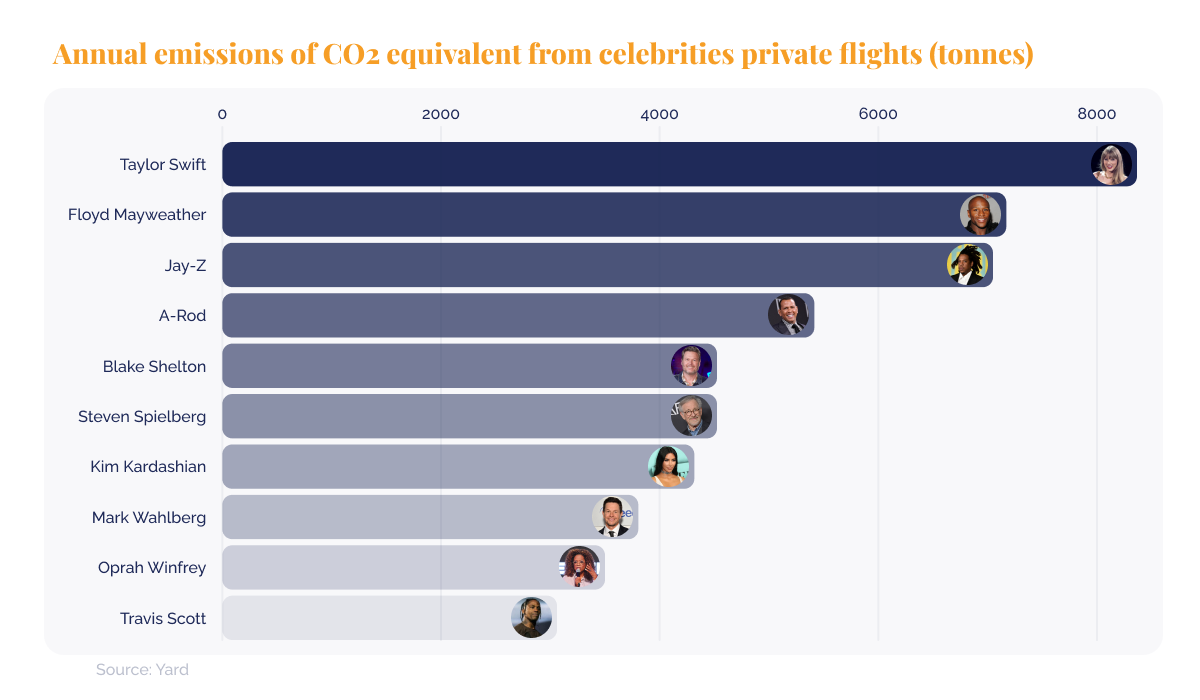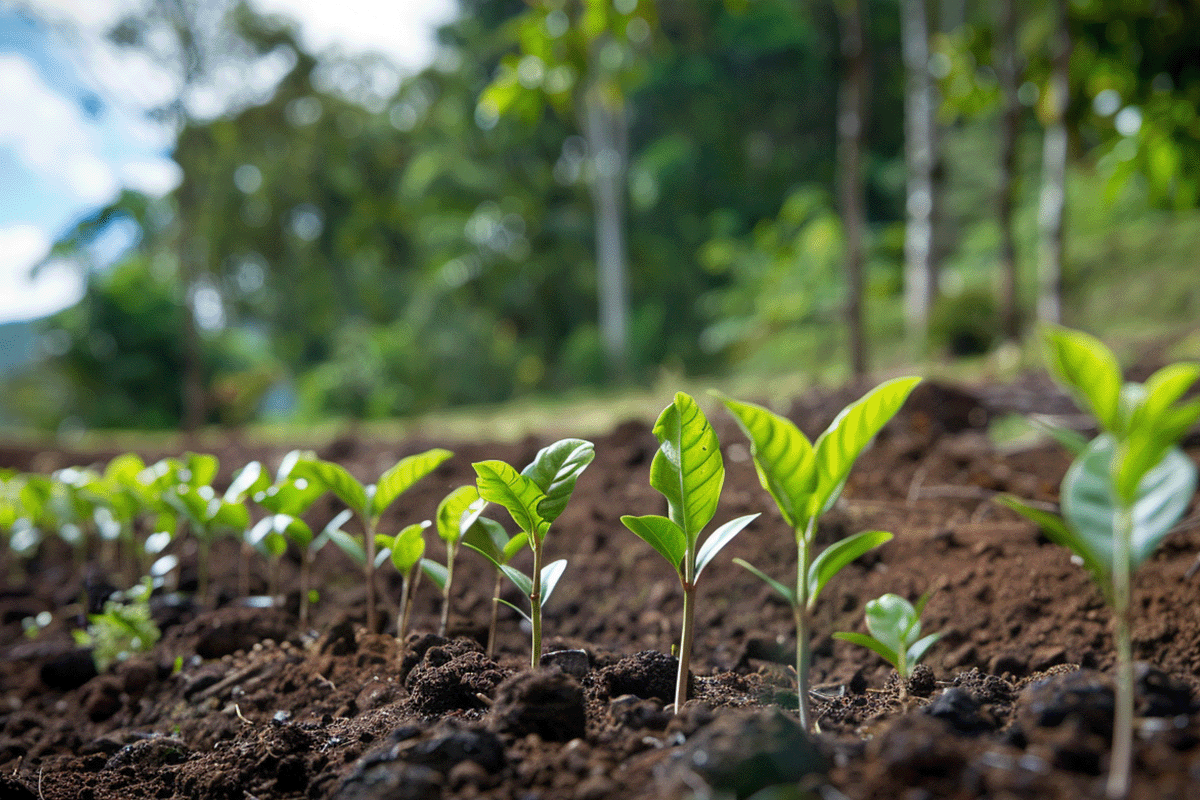Taylor Swift's Eras Tour—a captivating 21-month-long world tour, spanning 151 shows across five continents—has enthralled millions around the globe, showcasing her undeniable stardom with spellbinding performances and musical brilliance. But beneath the shimmer of this iconic tour lies a stark environmental reality: the significant carbon footprint left by extensive air travel. As Swift and her team jet-set across continents, the carbon emissions from her flights—and those of her crew and equipment—amplify the already concerning impact of aviation on the environment.
 Commercial plane seen from a distance flying over a city. AI generated picture.
Commercial plane seen from a distance flying over a city. AI generated picture.
Aviation accounts for roughly 2.5% of global emissions, and each hour flown emits about 100 times more carbon dioxide emissions (CO2) than other forms of transport. In addition, private jet flyers release 20–30 times more pollution than an economy class flyer on board a commercial flight. With celebrities like Taylor Swift choosing frequent private flights over public transportation, the environmental toll of their journeys can't be ignored. In this blog, we'll explore the Eras Tour's carbon footprint and the offset strategies that could balance the scales between global stardom and environmental stewardship.
Measure your carbon footprint
The carbon emissions of the Eras Tour
Taylor Swift's Eras Tour has not only been a cultural phenomenon but also a significant logistical endeavour involving extensive travel and large-scale events, each contributing to a substantial carbon footprint. In February 2024 alone, Taylor Swift's use of her private jet to attend 11 shows resulted in a whopping 393 metric tonnes of CO2 emissions—and this does not include the actual show emissions or the fans’ travelling emissions. To put this into perspective, the average person in the US emits about 14 tonnes of CO2 annually. Swift’s air travel emissions are thus 28 times more than an average person’s annual emissions.
Read more: How do carbon footprints work?
According to a study, over the course of the American leg of her tour, which lasted almost a year, Swift travelled nearly 37,053 miles, generating 77 tonnes of CO2. Moreover, for the South American leg of her tour, she emitted 61 tonnes of CO2 while travelling 29,431 miles. So for the North American and South American parts of her tour, she emitted a whopping 139 tonnes of CO2, and this excludes her flights to Asia and Australia. Her flight from Tokyo to Las Vegas to watch the Super Bowl alone emitted 40 tonnes of CO2.
Read more: The carbon footprint of the Super Bowl
Each show also draws millions of spectators, adding to the carbon footprint. In a poll for Swift’s show in Lyon, France, 31% of the polled group indicated that they would travel there by plane. Even just for the online booking for two Paris shows, the emissions are estimated to be 4.7 tonnes.
Read more: Industry carbon footprints: transport, events, and celebrities
In 2022, the star spent nearly 16 days in the air, emitting 8,293 tonnes of CO2, which is over 1,100 times higher than the average person's entire annual emissions. Other transportation emissions, like those associated with transporting her equipment, stage props, and merchandise across continents, further contribute to her carbon footprint.
 A graph showing Taylor Swift's CO2 emissions compared to other celebrities.
A graph showing Taylor Swift's CO2 emissions compared to other celebrities.
The volume of travel and linked activities associated with such large events, like the Eras Tour, therefore presents a significant environmental challenge. They highlight the colossal impact of these events on the planet. So what is a possible solution? To address the environmental impact of unavoidable emissions, carbon offsetting (or carbon compensation) has become a critical tool in the arsenal of carbon solutions.
Understanding carbon compensation
In response to the environmental impact of her tour, Taylor Swift has committed to compensating for her carbon emissions by purchasing more than double the carbon credits (also known as carbon units) needed to offset her emissions.
Read more: Taylor Swift's eco-tune: addressing her high carbon footprint
Not all emissions can be reduced or avoided. Especially not past emissions that have already been emitted into the atmosphere. And this is where carbon compensation comes in. Carbon compensation involves investing in environmental projects that reduce or remove CO2 from the atmosphere, effectively balancing out the emissions generated by activities like touring. This can be achieved through projects such as reforestation, renewable energy, or energy efficiency improvements. For Swift, this means purchasing carbon units that support these types of projects, ensuring that for every tonne of CO2 her tour emits, a tonne is saved elsewhere in a verifiable manner.
Each carbon unit represents 1 tonne of CO2 that is either reduced or removed from the atmosphere, and these units are certified by independent third parties to ensure their integrity and effectiveness.
Read more: How to reduce your business’ travel emissions through nature
 Close-up of tree seedlings planted in a forest. AI generated picture.
Close-up of tree seedlings planted in a forest. AI generated picture.
The mechanics of carbon compensation
The process of carbon compensation starts by calculating the total emissions from the operation or activity in question, like a tour, including travel, venue operations, and other related activities. Now that your carbon footprint is known, you can purchase an equivalent amount of carbon units from projects that prevent or remove emissions of an equivalent amount of CO2.
Learn how to measure your environmental impact
Carbon units are often generated by nature-based projects like reforestation, community-driven agroforestry, or energy-efficient cookstoves, that not only mitigate carbon emissions but also provide numerous environmental and socio-economic benefits. DGB Group’s nature-based projects, for instance, restore ecosystems, revitalise biodiversity, create job opportunities, provide additional income streams for local communities, and improve community wellbeing. All our carbon units are also verified by leading carbon standards, ensuring their impact and quality.
What are carbon units? Find out more in our free brochure
The bigger picture and its impact
For Taylor Swift, leveraging her high profile to promote sustainability could have ripple effects beyond just her tours. By publicly committing to carbon compensation, she raises awareness among her fans and the industry about the importance of addressing environmental harm. This can inspire other artists, companies, and individuals to adopt more sustainable practices, fostering a culture of environmental responsibility within the entertainment industry.
Read more: Sustainability simplified: Carbon footprinting for beginners
While Swift's Eras Tour undoubtedly has a significant environmental footprint, her commitment to carbon compensation represents a step towards mitigating the tour's impact on the planet. This approach not only helps neutralise her tour-related emissions but also sets a precedent in the music industry, highlighting the vital role of environmental responsibility in large-scale entertainment.
Carbon offsetting can play a crucial role in the broader environmental strategy, helping celebrities, organisations, and individuals address their carbon footprints while making a positive environmental impact through nature-based carbon projects. Unavoidable or irreducible emissions of a carbon footprint, large or small, can be compensated for with carbon units. When purchasing high-quality units that are generated by verified projects like those of DGB, you can also be assured that your purchase makes a bigger positive difference. Our projects are planting more than 31 million trees and distributing 300,000 energy-efficient cookstoves to local households in rural areas, thereby restoring nature and empowering local communities.
By choosing DGB’s carbon units to address your carbon footprint, you contribute to the bigger picture of helping to create a greener, more sustainable tomorrow.
Choose DGB—choose nature



